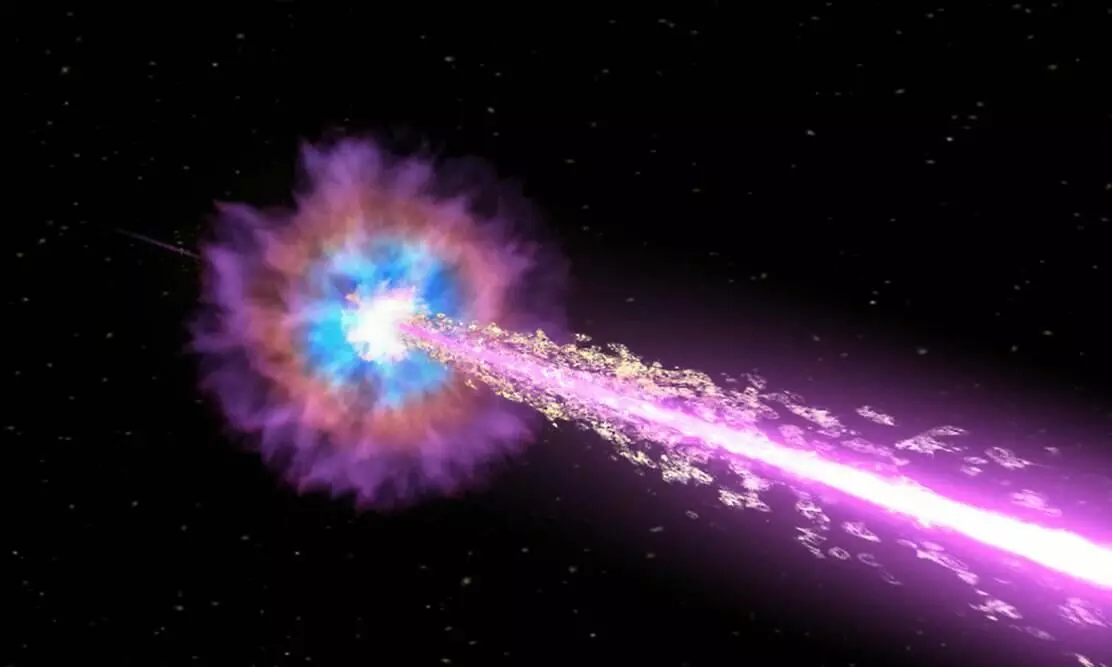
Unusual, bright, long-lasted pulse passed over Earth: NASA
text_fieldsNASA photo.
Washinton DC: The US's space research organisation NASA said that an unusual, bright, and long-lasted radiation pulse sped over the Earth on October 9, Sunday. The radiation blast originated from a "gamma-ray burst" (GRB), which is one of the most powerful explosions in the universe, The Indian Express reported.
The wave of X-rays and gamma rays stimulated detectors at NASA's Fermi Gamma-ray Space Telescope, Neil Gehrels Swift Observatory, and Wind spacecraft and other observatories, said NASA.
The signal came from the direction of the constellation Sagitta, travelling nearly 1.9 billion years and reached here. Scientists suggest that the radiation blast was out by the collapse of a large star under its own weight to form a black hole.
When such a collapse happens, the new black hole attracts strong streams of particles travelling at nearly the speed of light, and when these streams pierce the star, it emits X-rays and gamma rays.
It was in April this year that NASA's NICER X-ray telescope and Japan's Monitor of All-sky X-ray Image (MAXI), a detecter, were linked and created OHMAN (Orbiting High-energy Monitor Alert Network). The explosion was observed by the linked two, their inaugural observation after being linked. NICER is able to automatically and rapidly turn to outbursts that were detected by MAXI. Earlier, this required human intervention.
"OHMAN provided an automated alert that enabled NICER to follow up within three hours as soon as the source became visible to the telescope. Future opportunities could result in response times of a few minutes," TIE quoted Zaven Arzoumanian, NICER science lead at NASA's Goddard Space Flight Center.
The incident gives scientists new insights into stellar collapses and the birth of black holes. Further, it would assist in learning more about matter interactions when they travel at the speed of light. NASA says that another GRB at the scale of this might not happen for decades.























